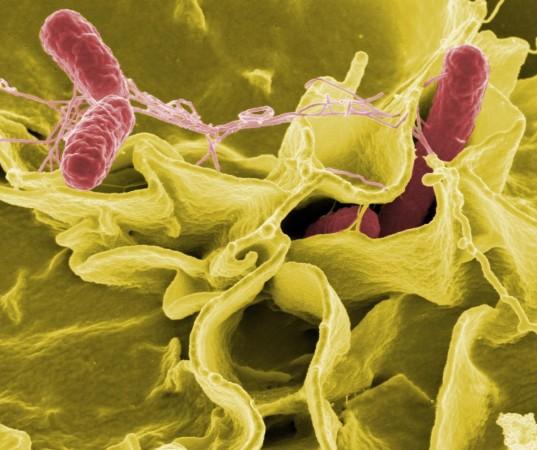If there is something reassuring about common diseases, it is that the modes of transmission of their causative pathogens are well-established. However, when new ways of their spread are learnt, it is unsettling. Now, scientists say that a common foodborne bacteria, Campylobacter, can spread through sexual contact as well.
The study is the first to prove that Campylobacteriosis—the diarrheal infectious disease caused by the pathogen—can be sexually transmitted. It was published in the journal Emerging Infectious Diseases.
"This research is important for public health messaging and for physicians as they talk to their patients about risks associated with sexual contact," said Dr. Katrin Kuhn, lead author of the study, in a statement. She also highlighted that it can pose an additional risk on individuals who have pre-existing health conditions such as AIDS.
Sickness through Food

Campylobacteriosis is a common foodborne infection. It is usually contracted when people consume contaminated food, particularly undercooked or raw poultry products. Consumption of unpasteurized milk also increases the risk of Campylobacter infections. Handling of feces of infected animals is another mode of transmission. According to WHO, Campylobacter is one of the four key global causes of diarrheal diseases. An estimated 166 million diarrheal illnesses reported worldwide are attributed to the pathogen.
Symptoms generally manifest two to five days after infection but can range from one to ten days. The most common symptom of the infection is diarrhea (bloody sometimes). Other symptoms include vomiting, stomach cramps, nausea, bloating, and fever. Though campylobacteriosis can result in death in extreme cases, it is very rare. It is usually restricted to the elderly and very young children, and sufferers of immunosuppressive diseases such as HIV/AIDS.
Despite treatment, some complications—though rare—can arise. Hepatitis (infection of the liver), bacteraemia (bacterial presence in the blood), and pancreatitis (infection of the pancreas) can occur. Complications post-infection include reactive arthritis (long-term inflammation of joints) and neurological disorders such as Guillain-Barré syndrome (a form of paralysis that can result in acute neurological and respiratory dysfunction) in some cases.
Investigation of Sexual Route

Dr. Kuhn pondered whether all the routes of transmission of campylobacteriosis had been found and proven. However, an outbreak of Campylobacter infections among men who have sex with men (MSM) in northern Europe led her to investigate a potential new route of transmission. She had been carrying out other research at Statens Serum Institut in Denmark at the time. Therefore, she began a study within the mentioned population in Denmark.
For the study, the authors used data from a matched case-control study (from 2010 to 2018) of 4,269 MSM (aged 18 or above) and 26,215 controls. This data was combined with national surveillance data on Campylobacter infections and foodborne infections caused by two other bacteria (Salmonella and Shigella).
Infections caused by Salmonella and Shigella were used for comparison within the study. While Salmonella is primarily transmitted through contaminated food, Shigella can be transmitted via food or sexual contact. The infectious dose of Salmonella is high (i.e.) a considerable amount of the pathogen must have been ingested to fall sick. However, Campylobacter and Shigella have low infectious doses, thereby, making their transmission easier.
Sexual transmission of Food Infection

The scientists found that that the rate of Campylobacter infection was 14 times higher among men who have sex with men than in the control subjects. This suggested that the route of transmission among these men was sexual contact. Additionally, it was also found that the odds of MSM contracting Shigella were 74 times higher than controls. No significant differences in Salmonella infection rates were observed between MSM and the control population.
"That's an additional reason why we believe Campylobacter can be transmitted through sexual contact like Shigella is - because people can become infected when only small amounts of the bacteria are present," noted Dr. Kuhn.
However, Dr. Kuhn emphasized that while the study focused on MSM, the results are equally relevant to people of all sexual orientations who engage in sexual acts that may involve anal-oral contact. The study also stated that it not only addresses epidemiologic concerns but also highlights the importance of informing the public about the risk of infection via sexual activity, especially in regions where Campylobacter infections exhibit a pattern of higher incidence.
"This is an interesting time because COVID-19 has made people more aware of the importance of monitoring infectious diseases in general, not only during a pandemic. There are many infections like the one caused by Campylobacter that make people sick. It's important that we spotlight the fact that these diseases exist and that we continue to conduct research on their effects and modes of transmission," concluded Dr. Kuhn.














